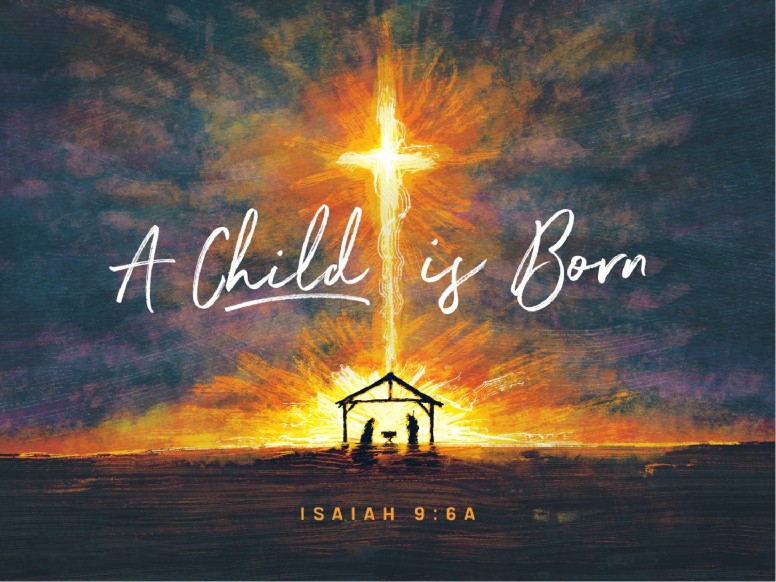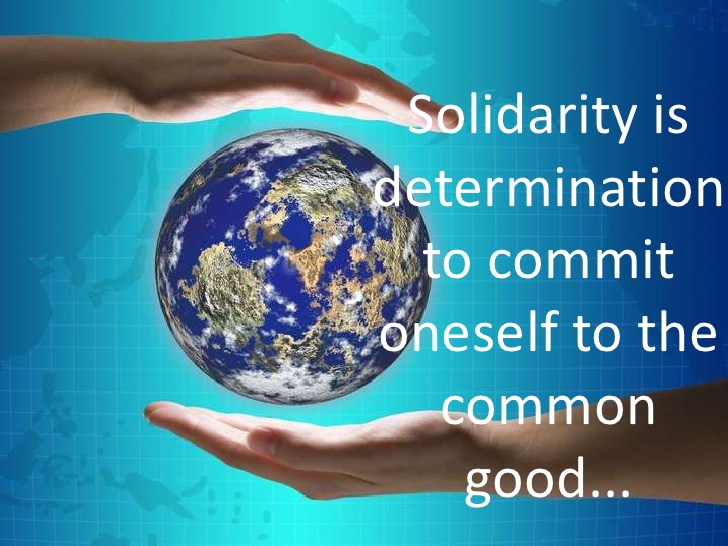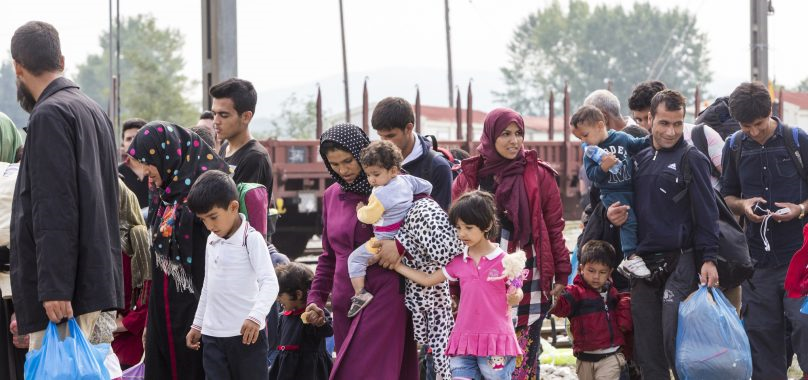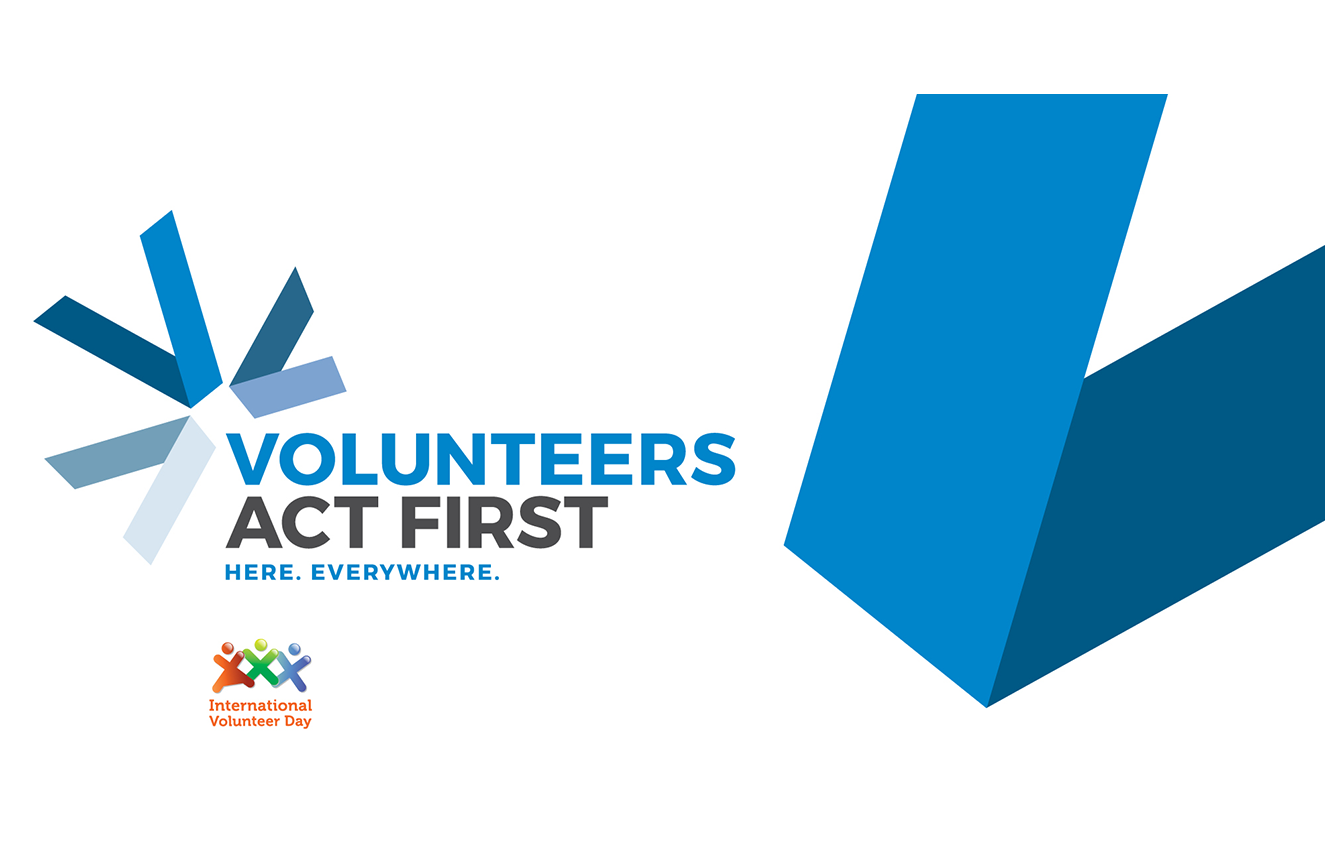Feast of Christmas, Year B
 When a baby is born, people look at the child and wonder…
When a baby is born, people look at the child and wonder…
They wonder at the marvel of a new life, yes.
But they also wonder about what this new-born will be… what he will become.
No doubt, the people who visited Mary and Joseph to see the new-born Child must have asked themselves such a question.
Centuries later, this is what has been written about this ordinary-looking baby and most extraordinary human being.
ONE SOLITARY LIFE
Here is a man who was born in an obscure village
the child of a peasant woman.
He grew up in another obscure village.
He worked in a carpenter shop until he was thirty,
and then for three years he was an itinerant preacher.
He never wrote a book.
He never held an office.
He never owned a home.
He never had a family.
He never went to college.
He never set foot inside a big city.
He never traveled two hundred miles from the place where he was born.
He never did one of the things that usually accompany greatness.
He had no credentials but Himself.
While still a young man, the tide of popular opinion turned against him.
His friends ran away.
One of them denied him.
He was turned over to his enemies.
He went through the mockery of a trial.
He was nailed to a cross between two thieves.
His executioners gambled for the only piece of property he had on earth while He was dying –
and that was his coat.
When He was dead, He was taken down and laid in a borrowed grave through the pity of a friend.
Nineteen wide centuries have come and gone
and today He is the centerpiece of the human race
and the leader of the column of progress.
I am far within the mark when I say that
all the armies that ever marched,
and all the navies that ever were built,
and all the parliaments that ever sat,
and all the kings that ever reign,
put together have not affected the life of man upon this earth
as powerfully as has that ONE SOLITARY LIFE. James A Francis, D.D.
Source: Images: chabad.org Sharefaith thegardian.com
4th Sunday of Advent, Year B
The gospel of this 4th Sunday of Advent (Year B) presents us with the scene of the Annunciation to Mary (Lk.1:26-38).
Of course, we know it well, we could tell the ‘story’ easily and in all its details.
We are so used to the text that nothing should surprise us anymore, and yet…
As I reflect on it, there is one aspect that strikes me: Mary said: ‘Yes’.
Or rather, no, she did not say: ‘Yes’, but she said: “Let this be done unto me…”
We cannot imagine that she could not, that she would not, have said this!
How could one refuse something to God?…
From this scene of this annunciation in the gospel, I move on to many other scenes of ‘annunciation’.
What could be described as ‘personal annunciations’.
And I recall the answer given…
Those annunciations were not brought by an angelic messenger, of course.
They were not conveyed either in a celestial language or a prophetic statement.
Yet, they were real messages from God.
- A remark by a friend… the remark was so appropriate to the situation of the moment…
- A question by a neighbour… so much in line with one’s reflection at the time…
- A suggestion by a colleague… surprising at the moment, but attuned to the circumstances…
- An interpellation by a relative… it caught us unawares but fitted our experience of the day…
- A request from a stranger… inopportune but justified…
Yes, they were true ‘annunciations’ and the response then was…?
We may have first spoken, vocally or in a soft whisper, the words of Mary: “How can this happen?…”
There was the perception that this was a moment of commitment.
It was a unique occasion of acceptance to enter God’s plan.
Then, was the following response similar to Mary’s?…
“Let this be done unto me…”
This is really the only fitting response to God.
Perhaps not the easiest, or the most spontaneous.
But, can we refuse something , anything, to… God?
Source: Image: catholicos.blogspot.com
International Human Solidarity Day – 20 December
 The United Nations’ (UN) International Human Solidarity Day is annually held on December 20 to celebrate unity in diversity. It also aims to remind people on the importance of solidarity in working towards eradicating poverty.
The United Nations’ (UN) International Human Solidarity Day is annually held on December 20 to celebrate unity in diversity. It also aims to remind people on the importance of solidarity in working towards eradicating poverty.
Background
Solidarity refers to a union of interests, purposes or sympathies among members of a group. In the Millennium Declaration world leaders agreed that solidarity was a value that was important to international relations in the 21st century. In light of globalization and growing inequality, the UN realized that strong international solidarity and cooperation was needed to achieve its Millennium Development Goals. The UN was founded on the idea unity and harmony via the concept of collective security that relies on its members’ solidarity to unite for international peace and security.
On December 22, 2005, the UN General Assembly proclaimed that International Solidarity Day would take place on December 20 each year. The event aimed to raise people’s awareness of the importance of advancing the international development agenda and promoting global understanding of the value of human solidarity. The assembly felt that the promotion of a culture of solidarity and the spirit of sharing was important in combating poverty.
Symbols
The UN emblem may be found in material promoting International Human Solidarity Day. The emblem consists of a projection of the globe centered on the North Pole. It depicts all continents except Antarctica and four concentric circles representing degrees of latitude. The projection is surrounded by images of olive branches, representing peace. The emblem is often blue, although it is printed in white on a blue background on the UN flag.
Source: Text: timeanddate.com Image: SlideShare
International Migrants Day – 18 December
 Migration has been a courageous expression of the individual’s will to overcome adversity and to live a better life. Today, globalization, together with advances in communications and transportation, has greatly increased the number of people who have the desire and the capacity to move to other places. This new era has created challenges and opportunities for societies throughout the world. It also has served to underscore the clear linkage between migration and development, as well as the opportunities it provides for co-development, that is, the concerted improvement of economic and social conditions at both origin and destination. So, now let’s jump right into the past of what is International Migrant’s Day!
Migration has been a courageous expression of the individual’s will to overcome adversity and to live a better life. Today, globalization, together with advances in communications and transportation, has greatly increased the number of people who have the desire and the capacity to move to other places. This new era has created challenges and opportunities for societies throughout the world. It also has served to underscore the clear linkage between migration and development, as well as the opportunities it provides for co-development, that is, the concerted improvement of economic and social conditions at both origin and destination. So, now let’s jump right into the past of what is International Migrant’s Day!
History of International Migrant’s Day
International Migrants Day is an international day overseen on the 18th of December as International Migrant’s Day, which was appointed by the General Assembly of the United Nations on December 4th 2000, after having taken into account the large and increasing number of migrants in the world. On December 18th 1990, the General Assembly adopted the international convention on the protection of the rights of migrant workers and members of their families. International Migrants Day is observed throughout many countries, intergovernmental and non-governmental organizations through the spread of information on human rights and fundamental political freedoms of migrants, and through sharing of experiences and the design of actions to ensure the protection of migrants.
Migration, in the case of human beings is the act of moving from one place to another. Mainly moving from a country of origin to a new country to start new lives as permanent residents in their new home. Now, Nomadic movements are normally not regarded as migrations as there is no intention to settle in the new place and because the movement is generally seasonal. Only a few nomadic peoples have retained this form of lifestyle in modern times. Also, the temporary movement of people for the purpose of travel, tourism, pilgrimages, or the commute is not regarded as migration, in the absence of an intention to live and settle in the visited places.
Source: Text & Image: DAYSoftheYEAR
3rd Sunday of Advent, Year B
In all religions, whatever be the name and description of a given set of beliefs,
there are principles and prescriptions,
rites, and rituals, and regulations,
commandments and observances.
Whichever way they are formulated, there are admonitions saying:
“Thou shalt” and “Thou shalt not.”
The language used indicates clearly the ‘should’, the ‘must’, the ‘have to’
that guide the believers of a certain group.
And the behaviour of the faithful is meant to translate these into concrete actions.
This is the whole area of what WE are expected to do for God.
It is sometimes described at length and with much insistence.
Yet, this is only one side of the coin, only one aspect of religion.
There is the whole area of what GOD does for us.
This aspect is presented to us in a beautiful and inspiring way
in some of the texts of this 3rd Sunday of Advent, Year B.
God’s messenger acting in his name,
“brings good news to the poor,
binds up hearts that are broken,
proclaims liberty to captives,
proclaims a year of favour from the Lord.” (1st reading: Is.61:1-2,10-11)
“His mercy reaches from age to age,
the hungry he has filled with good things,
he comes to the help of his servant,
he remembers to show mercy.” (Response: Lk.1:46-50,53-54)
Why do we concentrate so much on what we should do for God?
This season of Advent is a good time to change our focus and, at long last,
to consider and marvel at all that God does for us, day after day!
Source: Image: 123RF Stock Photos
International Mountain Day – 11 December
Towering, majestic, and beautiful. Mountains are some of the most beautiful of nature’s structures, stolid and regal they stand against the sky, of such a size that they can catch entire countryside’s in their shadow, and turn back the ravages of storms against their unflinching sides. They are the source of recreation and resource, with snow covered sides providing ski slopes to enthusiasts, and minerals in abundance to those brave enough to delve into their stony sides.
In certain areas of the world they are also a source of unique agriculture, providing ample space for the production of those products that grow best on their slopes. Coffee, Cocoa, Herbs, Spices, and the form of handicrafts that spring from the minds of those who live in the unchanging protection of these towering edifices to geology. International Mountain Day is your opportunity to head out and appreciate these unique landforms, and all they have to offer.
History of International Mountain Day
Established in December of 2003, the United Nations General Assembly created this day to help bring awareness to all of the things we rely on mountains for. Whether it’s all of the glories mentioned above, or how necessary they are for the health and well-being of the flora and fauna that call them their home, International Mountain Day promotes them all.
Source: Text & Image: DAYSoftheYEAR
2nd Sunday of Advent, Year B
Some theologians have said that philosophy is the handmaid of theology.
In other words, some philosophical reflection can lead to a deeper understanding of some aspects of the faith.
I personally think that the same can be said of psychology.
Again, I am inclined to believe that a better knowledge of our human ways of thinking, of acting and reacting,
can help us to understand God’s ways!
Of course, there is an amazing difference – a divine one!
Yet, since God made himself a human being, there must be some similarities.
I say this especially as we live – yes, LIVE – this period of Advent.
Everyone repeats that it is a season of waiting, awaiting the coming of someone, Someone with a capital S.
If we look at our human experience of WAITING, we may understand better what this season is about.
- A wife waiting for the return of a husband gone for a long period on a research trip;
- parents awaiting the return of a child who had been away roaming the world;
- a mother-to-be waiting for 9 long months for the birth of her first-born;
- a student waiting for the exam results that will mean the open door to further studies.
All of them know well what it means to wait – this desire, this longing for the event to take place.
The anxious thought that… perhaps there will be a delay, a change of plan, an accident, a failure…
The anticipation of what will take place when it does finally happen.
There is already a taste of the joy to come – the joy of being together again.
Has this human experience anything to say to our waiting for God?
A word of caution here: it is not a question of putting Baby Jesus back in the Crib – NO!
Oh, we may do this as a teaching aid to help young children understand what Christmas is about.
We do it and it is appropriate for this situation and for that reason.
But many adults protest – and rightly so – that this is not the deep meaning of Christmas NOW.
Simply said: Christmas in our time is NOT putting Baby Jesus back in the Crib –
it is allowing God to take his place at the heart of our human experience – nothing less.
And this takes some practice… it takes some preparing to accept God as God in all the areas of our daily life –
“the mountains and the valleys, the cliffs and the ridges” of which Isaiah speaks about.
This is why there is and ADVENT Season … and more, to do this!
Source: Image: commons.wikipedia.org
Note: Another reflection on different themes is available in French at: https://image-i-nations.com/2e-dimanche-de-lavent-annee-b/
and a video presentation is also offered at: https://image-i-nations.com/2e-dimanche-de-lavent-ghislaine-parle/
International Volunteer Day – 5 December
International Volunteer Day (IVD) mandated by the UN General Assembly, is held each year on 5 December. It is viewed as a unique chance for volunteers and organizations to celebrate their efforts, to share their values, and to promote their work among their communities, non-governmental organizations (NGOs), United Nations agencies, government authorities and the private sector.
Apart from mobilising thousands of volunteers every year, the United Nations Volunteers (UNV) programme contributes to peace and development by advocating for the recognition of volunteers and working with partners to integrate volunteerism into development programming.
2017 Theme: Volunteers Act First. Here. Everywhere.
IVD 2017’s theme #VolunteersActFirst. Here. Everywhere. recognizes the contributions of volunteers as first responders in times of crisis. Volunteers are present, all around us, answering calls in times of need, helping save lives today, and supporting those who want to continue living their lives with dignity tomorrow.
Risking their lives every day to care for people affected by conflict, violence and humanitarian crises, volunteers brave many dangers to help others, driven by the desire to make a difference in the face of human suffering. This year, IVD promotes the contributions of such volunteers at the local, national and international level.
Source: Text & Image: UN


 Every so often a thing comes to pass that is of such astounding importance that we must stand up and recognize i
Every so often a thing comes to pass that is of such astounding importance that we must stand up and recognize i